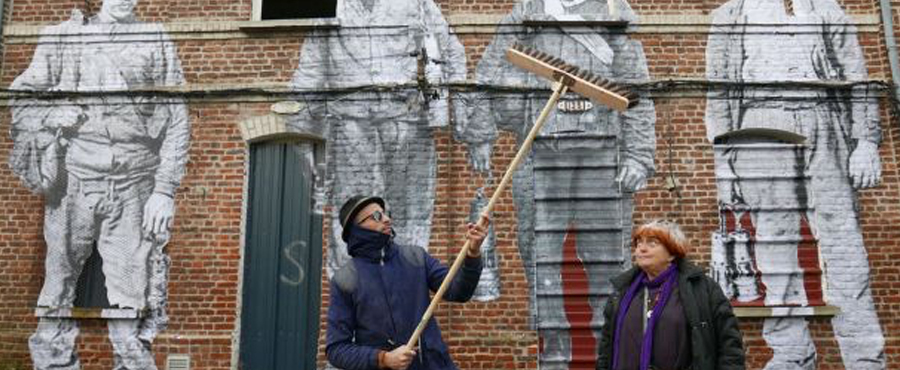Faces Places

What happens when close-up pictures of human faces are enlarged and displayed in public spaces? Faces Places is a film that invites viewers along on a road trip to see the answer to this question. Agnes Varda, a well-known French filmmaker, who at 89 is still making films, teams up with a prolific and anonymous (but internationally known) 33-year-old street artist/muralist, called JR, and travels the French countryside in search of opportunities to, in Varda’s words, “imagine things and ask people if we can express our imaginations on their turf.” They travel in JR’s van that also houses a large format camera booth. At various stops, they invite people to have a close-up picture taken, and within 5 min the large-format polaroid-like apparatus spits out a huge (approximately 3 foot × 4.5 foot) black and white photograph. They then enlist the photographers to help paste their photos up in a public space.
At the beginning of the film, Agnes and JR have just met, but they soon decide, based on their respective bodies of work, to do this image-gathering road trip together. Where they decide to go, and who they meet and photograph, is often determined by chance. “Chance has always been my best assistant,” Agnes says. One of their first stops, for example, is triggered by a collection of old postcards of miners that Agnes had saved. They travel toward a mining area in France and eventually discover an old mining town where they learn that a row of old miner’s houses is slated for demolition. JR and his assistants put together a series of old photographs of miners, enlarge them to over 20 feet high and paste them onto the two-story buildings. The result is stunning and evokes strong emotional memories from some of the village’s older residents, including an older woman who is refusing to move out of one of the houses slated for demolition. Agnes and JR are so impressed with her that, to pay her homage, they take her picture and enlarge it to cover the building she is refusing to move out of. When she sees her face covering the entire building, she is overwhelmed with emotion. This engagement with the persons whose photos are displayed is part of what that makes this film work. As a viewer, one quickly becomes a participant in the emotional responses to the large-format closeups of people in public places.
